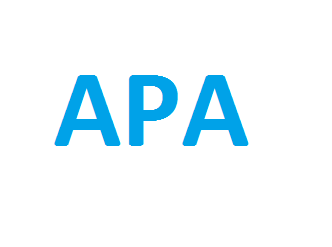
The Academic Perspective Procedia publishes Academic Platform symposiums papers as three volumes in a year. DOI number is given to all of our papers.
Publisher : Academic Perspective
Journal DOI : 10.33793/acperpro
Journal eISSN : 2667-5862
Su Sertliğinin ANFIS ile Tahmin Edilmesi: Köprüçay Örneği
Kemal Saplıoğlu;Tülay Suğra Küçükerdem
1295
604
Abstract
Günümüzde şehirleşme ile sanayileşmenin hızla artması ve iklim değişikliklerine sebep olan küresel ısınma birtakım çevre sorunlarını da beraberinde getirmektedir. Su kalitesinin değişimi de önemli çevre sorunlarının başında gelmektedir. Su kalitesi suyun fiziksel, kimyasal ve biyolojik özellikleri hakkında fikir vermekte ve suyun kullanım amacına göre değerlendirilmektedir. Su kalitesini etkileyen önemli parametrelerden birisi de su sertliğidir. Bu çalışmada suyun elektriksel iletkenlik, anyon veya katyon değerleri ve toplam tuz konsantrasyonu özellikleri ile farklı girdi kombinasyonları uygulanıp, su sertliğinin tahmini için Adaptif Ağ Tabanlı Bulanık Çıkarım Sistemi (ANFIS) kullanılarak birtakım modeller geliştirilmiştir.
Keywords:
Su sertliği, su kalitesi modelleme, ANFIS modelleme
References
[1] Gedik K, Verep B, Terzi E, Fevzioğlu S. Fırtına deresi (Rize)'nin fiziko-kimyasal açıdan su kalitesinin belirlenmesi. Ekoloji Dergisi 2010; 19(76); 25-35.
[2] Kalyoncu H, Barlas M, Yorulmaz B. Aksu Çayı'nda (Isparta-Antalya) epilitik alg çeşitliliği ve akarsuyun fizikokimyasal yapısı arasındaki ilişki. Ekoloji Dergisi 2008; 17(66);15-22.
[3] Taş B. Derbent Baraj Gölü (Samsun) su kalitesinin incelenmesi. Ekoloji Dergisi 2006; 15(61); 6-15.
[4] Gültekin F, Ersoy A F, Hatipoğlu E, Celep S. Trabzon ili akarsularının yağışlı dönem su kalitesi parametrelerinin belirlenmesi. Ekoloji Dergisi 2012; 21(82); 77-88.
[5] İleri S, Karaer F, Katip A, Onur S. Sığ göllerde su kalitesi değerlendirmesi, Uluabat Gölü örneği. Uludağ Üniversitesi Mühendislik-Mimarlık Fakültesi Dergisi 2014; 19(1); 47-57.
[6] Cebe K, Barlas L. Water quality modelling in Kaş bay. Applied Mathematical Modelling 2016; 40; 1887-1913.
[7] Yenilmez F, Aksoy A. Uluabat Gölü su kalitesinin WASP7.2 modeli kullanılarak değerlendirilmesi. İzmir, 2007.
[8] Tomas D, Curlin M, Maric A S. Assessing the surface water status in Pannonian ecoregion by the water quality index model, Ecological Indicators 2017; 79; 182-190.
[9] Zhang L, Zou Z, Shan W. Development of a method for comprehensive water quality forecasting and its application in Miyun reservoir of Beijing, China. Journal of Environmental Sciences 2016; 56.
[10] Ercan Tekşen H, Anagün A S. Su kalitesi indeksinin belirlenmesinde uzman bulanık sistem yaklaşımı. Antalya, 2016.
[11] Rizo-Decelis L D, Pardo-Igúzquiza E, Andreo B. Spatial prediction of water quality variables along a main river channel, in presence of pollution hotspots. Science of the Total Environment 2017; 605(606); 276-290.
[12] Avila R, Horn B, Moriarty E, Hodson R, Moltchanova E. Evaluating statistical model performance in water quality prediction. Journal of Environmental Management 2018; 206; 910-919.
[13] Xu L, Liu S. Study of short-term water quality prediction model based on wavelet neural network. Mathematical and Computer Modelling 2013; 58; 807-813.
[14] Abdelmalik K. Role of statistical remote sensing for Inland water quality parameters prediction. The Egyptian Journal of Remote Sensing and Space Sciences 2016.
[15] Slaughter A, Hughes D, Retief D H, Mantel S K. A management-oriented water quality model for data scarce catchments. Environmental Modelling & Software 2017; 97; 93-111.
[16] Ding Y R, Cai Y J, Sun P D, Chen B. The use of combined neural networks and genetic algorithms for prediction of river water quality. Journal of Applied Research and Technology 2014; 12; 493-499.
[17] Jaddi N S ve Abdullah S. A cooperative-competitive master-slave global-best harmony search for ANN optimization and water-quality prediction. Applied Soft Computing 2017; 51; 209-224.
[18] Chen W B, Liu W C. Water quality modeling in reservoirs using multivariate linear regression and two neural network models. Hindawi 2015.
[19] Mousavi S F, Amiri M J. Modelling nitrate concentration of groundwater using adaptive neural-based fuzzy inference system. Soil&Water Res 2012; 7; 73-83.
[20] Ahmed M A, Shah S M A. Application of adaptive neuro-fuzzy inference system (ANFIS) to estimate the biochemical oxygen demand (BOD) of Surma River. Journal Of King Saud University-Engineering Sciences 2017; 29;237-243.
[21] Sahoo M M, Patra K, Khatua K. Inference of water quality index using ANFIS and PCA. Aquatic Procedia 2015; 4;1099-1106.
Cite
-
 %0 Academic Perspective Procedia (ACPERPRO) Su Sertliğinin ANFIS ile Tahmin Edilmesi: Köprüçay Örneği% A Kemal Saplıoğlu , Tülay Suğra Küçükerdem% T Su Sertliğinin ANFIS ile Tahmin Edilmesi: Köprüçay Örneği% D 11/9/2018% J Academic Perspective Procedia (ACPERPRO)% P 824-833% V 1% N 1% R doi: 10.33793/acperpro.01.01.144% U 10.33793/acperpro.01.01.144
%0 Academic Perspective Procedia (ACPERPRO) Su Sertliğinin ANFIS ile Tahmin Edilmesi: Köprüçay Örneği% A Kemal Saplıoğlu , Tülay Suğra Küçükerdem% T Su Sertliğinin ANFIS ile Tahmin Edilmesi: Köprüçay Örneği% D 11/9/2018% J Academic Perspective Procedia (ACPERPRO)% P 824-833% V 1% N 1% R doi: 10.33793/acperpro.01.01.144% U 10.33793/acperpro.01.01.144
© Academic Perspective 2018. All rights reserved.




